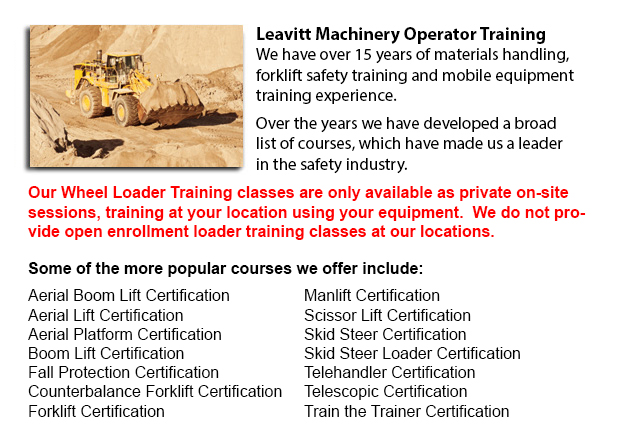
Lift trucks are available in many other models that have various load capacities. Nearly all average lift trucks utilized inside warehouse settings have load capacities of 1-5 tons. Bigger scale models are used for heavier loads, like for example loading shipping containers, can have up to fifty tons lift capacity.
The operator can utilize a control so as to raise and lower the blades, which may also be called "blades or tines". The operator of the lift truck has the ability to tilt the mast to be able to compensate for a heavy loads tendency to tilt the blades downward. Tilt provides an ability to operate on uneven ground too. There are annual contests meant for skilled forklift operators to compete in timed challenges as well as obstacle courses at local lift truck rodeo events.
General use
All forklifts are rated for safety. There is a particular load limit and a specific forward center of gravity. This vital info is provided by the manufacturer and located on the nameplate. It is important loads do not go beyond these specifications. It is against the law in a lot of jurisdictions to tamper with or take out the nameplate without obtaining consent from the lift truck maker.
Most lift trucks have rear-wheel steering in order to enhance maneuverability within tight cornering conditions and confined spaces. This particular type of steering differs from a drivers' initial experience together with other vehicles. Because there is no caster action while steering, it is no needed to apply steering force to be able to maintain a continuous rate of turn.
Unsteadiness is another unique characteristic of forklift utilization. A constantly varying centre of gravity occurs with each and every movement of the load between the lift truck and the load and they should be considered a unit during use. A lift truck with a raised load has gravitational and centrifugal forces which could converge to cause a disastrous tipping mishap. In order to prevent this from happening, a lift truck should never negotiate a turn at speed with its load elevated.
Forklifts are carefully made with a load limit for the forks. This limit is lowered with undercutting of the load, which means the load does not butt against the fork "L," and likewise lowers with blade elevation. Usually, a loading plate to consult for loading reference is positioned on the forklift. It is dangerous to make use of a forklift as a worker lift without first fitting it with specific safety equipment such as a "cherry picker" or "cage."
Lift truck use in warehouse and distribution centers
Forklifts are an essential part of distribution centers and warehouses. It is vital that the work situation they are located in is designed to accommodate their safe and efficient movement. With Drive-In/Drive-Thru Racking, a forklift must travel inside a storage bay that is many pallet positions deep to set down or obtain a pallet. Operators are normally guided into the bay through rails on the floor and the pallet is positioned on cantilevered arms or rails. These confined manoeuvres need skillful operators in order to do the job efficiently and safely. For the reason that every pallet needs the truck to enter the storage structure, damage done here is more common than with other kinds of storage. Whenever designing a drive-in system, considering the dimensions of the tine truck, along with overall width and mast width, must be well thought out so as to guarantee all aspects of a safe and effective storage facility.
-
Coquitlam Crane Certification
Coquitlam Crane Certification - The Crane Certification training program consists of subject matter recommended by industry concerning the safe and efficient operation of cranes. Trainees will be taught the following: how to identify cranes and their... More -
Coquitlam Crane Training Courses
Coquitlam Crane Training Courses - A crane is a kind of equipment designed to move, lift and lower heavy stuff. A crane is usually equipped with a hoist, sheaves, and chains or wire ropes. Cranes are used in the manufacturing, construction and transp... More -
Coquitlam Boom Lift Safety Training
Coquitlam Boom Lift Safey Training - Boom lifts are a kind of elevated work platform or aerial lifting device which are usually used in industry, warehousing and construction. Boom lifts can be utilized in virtually any setting due to their versatili... More -
Coquitlam Boom Lift Training
Coquitlam Boom Lift Training - Aerial platforms or also known as elevated work platforms are devices which allow workers to carry out duties and tasks at elevated heights that would not be otherwise reachable. There are different aerial lifts availab... More -
Coquitlam Forklift Certification Schools
Coquitlam Forklift Certification Schools - Forklift Certification is mandatory within North America. Hence, forklift training programs are important both for businesses and for people looking for jobs in industries as operators of forklifts. Forklift... More -
Coquitlam Wheel Loader Training
Coquitlam Wheel Loader Training - Normally, the different types of heavy equipment training are divided into 2 categories of equipment: those that have rubber tires and tracked vehicles. Tracked vehicles include items like for instance bulldozers, ex... More -
Coquitlam Heavy Equipment Training Schools
Coquitlam Heavy Equipment Training Schools - There are a lot of heavy equipment training schools to choose from. If you would like to get to the best, it is important to examine several factors of the school to be able to determine the level of educa... More -
Coquitlam Telehandler Training Courses
Coquitlam Telehandler Training Courses - Employers are responsible for making sure that their supervisory and operating personnel are trained to work proficiently making use of telehandler equipment. The skill level of workers should be assessed. If... More

Forklift Certification Coquitlam
TOLL FREE: 1-888-254-6157
Coquitlam, British Columbia
forkliftcertificationcoquitlam.com
Email Us
About Us


